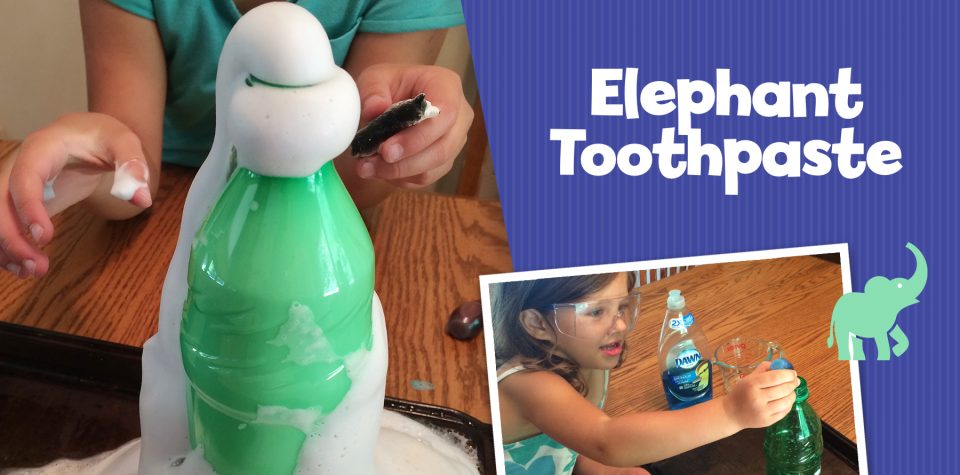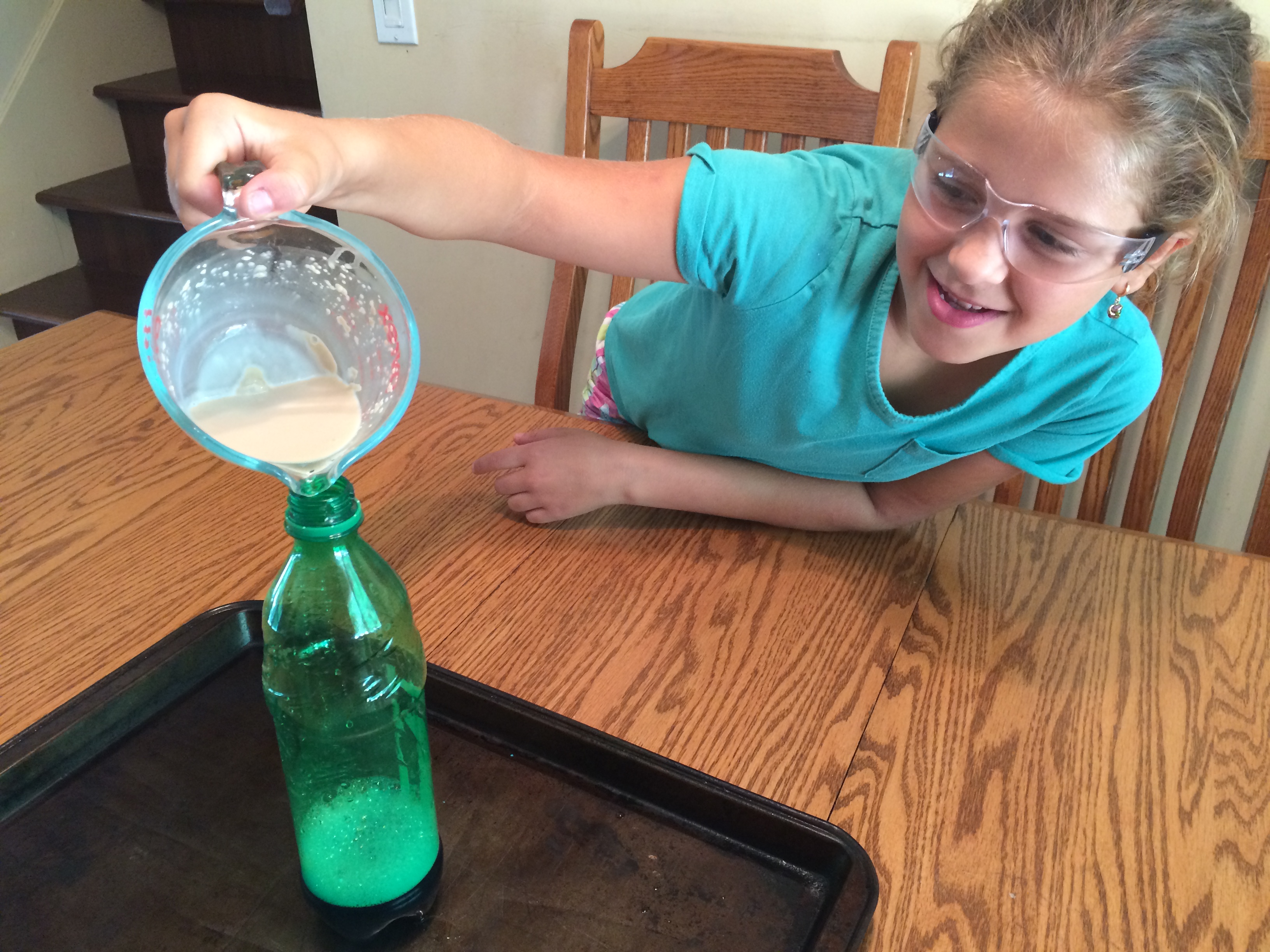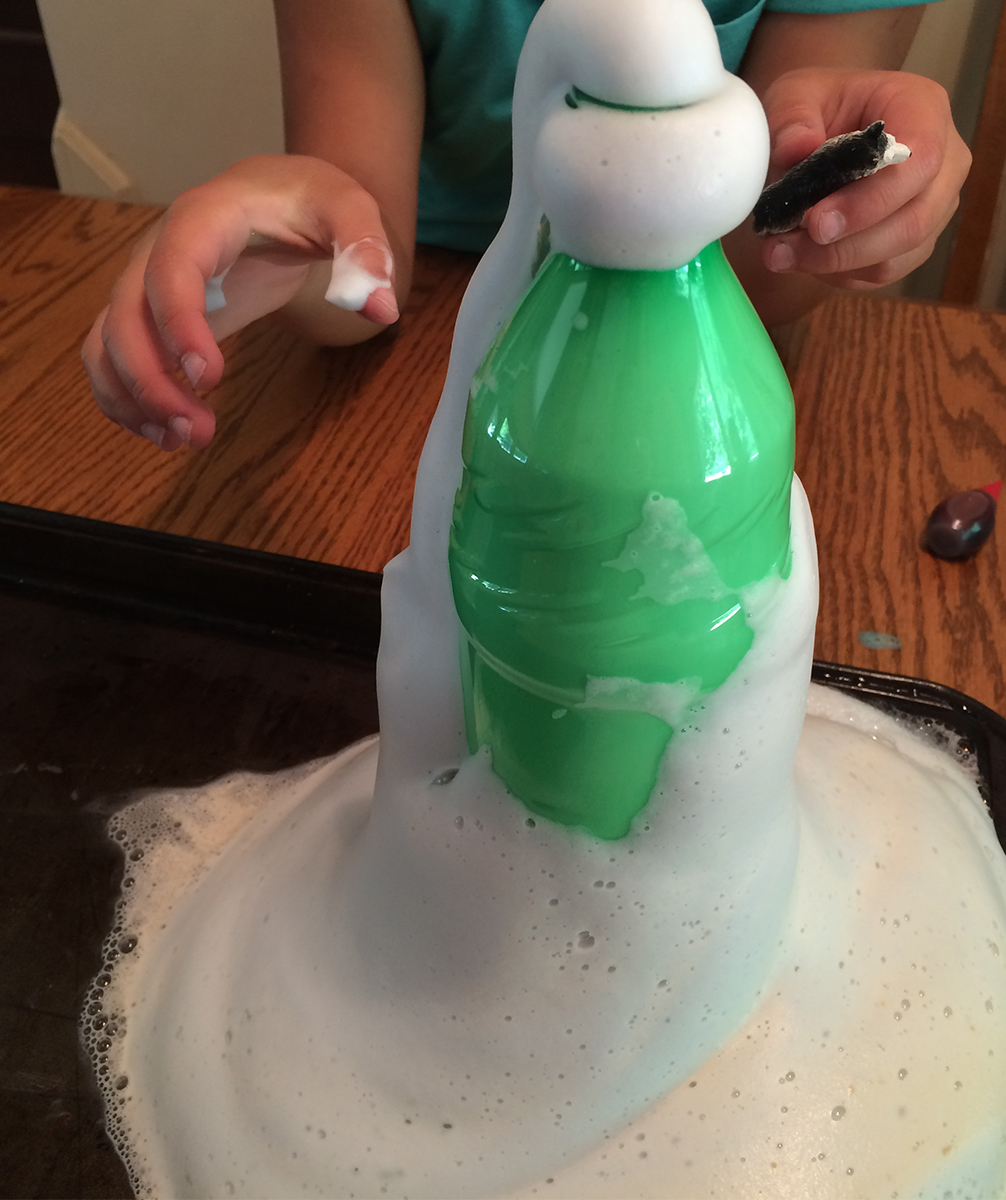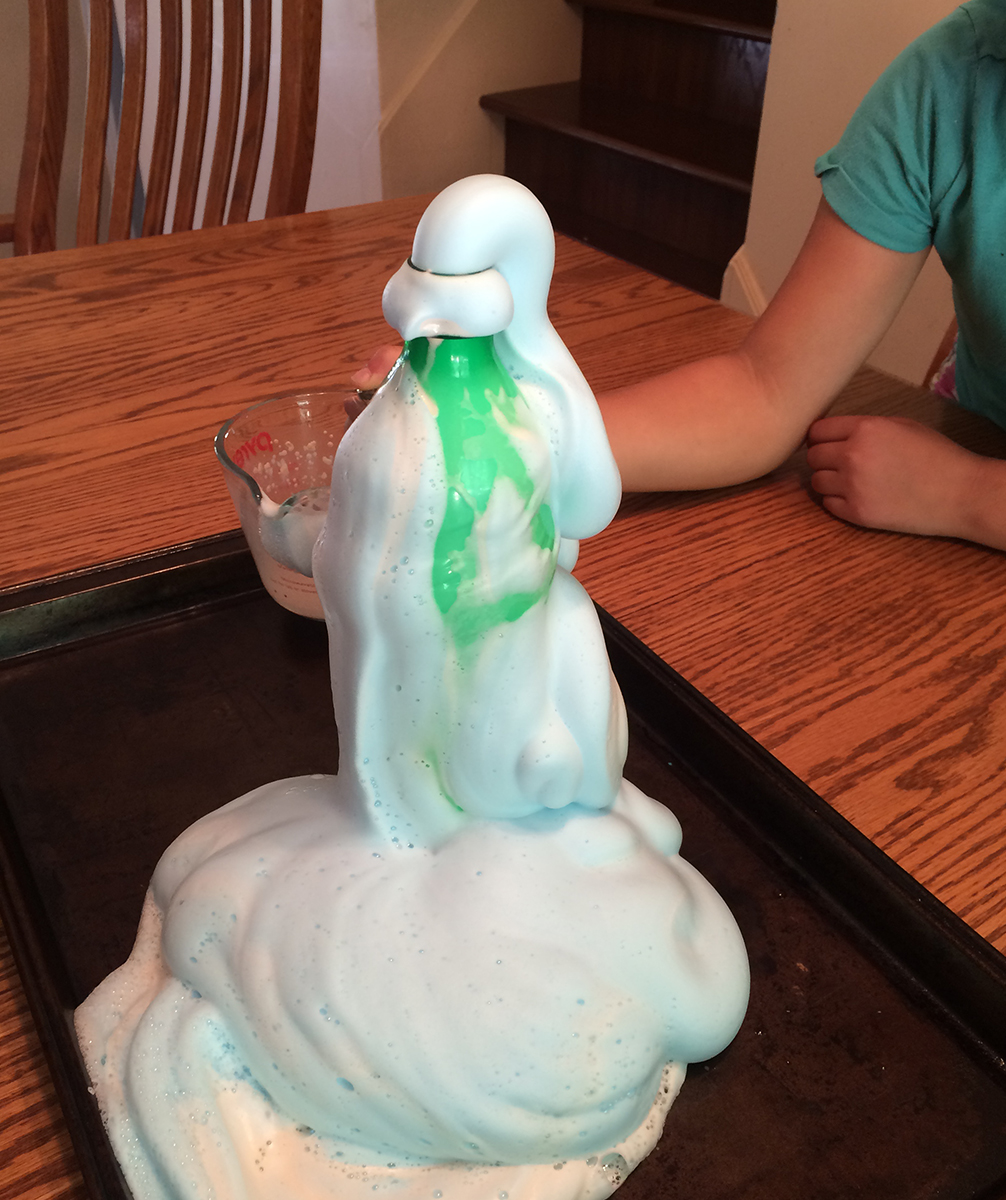
How to Make Elephant Toothpaste
The best science experiments are the simplest—the ones where the kids get their hands dirty and really understand every step. It also helps to end with a show-stopping result and this quick, easy experiment does not disappoint.
Ever wonder how elephants brush their teeth?
Well, they don’t. Not with a toothbrush and toothpaste anyway. But in this experiment, we’re going to make some elephant-sized toothpaste.
 Here’s what you’ll need:
Here’s what you’ll need:
- 20 oz bottle
- Glass bowl or measuring cup
- Dish soap
- 20 volume (6%) hydrogen peroxide, liquid*
- Dry yeast packet (1 tbsp)
- Food coloring (optional)
- Goggles
- Baking tray
*The hydrogen peroxide you probably have on hand for first aid reasons is 10 volume (3%). 20 volume hydrogen peroxide is cheaply and easily obtained from a hair salon or pharmacy (in the hair dyes section). Make sure you get the liquid one (and not the cream).
Let’s get started!
Step 1: Place the bottle on the baking tray. This toothpaste concoction is quite messy and spreads easily, so you’ll want to contain it!

Step 2: Put your goggles on! We’re working with hydrogen peroxide, which can irritate the eyes and skin.
Step 3: Put one tablespoon of dish soap in the bottle. Add a few drops of food coloring, if you wish. Carefully and slowly pour in half a cup of hydrogen peroxide. Swish the bottle around to mix.
Step 4: In a glass bowl or measuring cup (I found the measuring cup easier when it came time to pour), mix three tablespoons very warm water with one packet of dry yeast. Mix thoroughly, about 30 seconds.

Step 5: Now for the fun part! Pour the yeast mixture into the bottle. The reaction produces a thick, foamy snake of “toothpaste” that comes oozing out of the bottle.
 How does it work?
How does it work?
The dish soap becomes thick and foamy because each bubble is filled with oxygen. Where did the oxygen come from? The yeast-and-water mixture extracted it from the hydrogen peroxide.
Did you notice how fast the reaction was? Touch the bottle. It’s warm! The heat created is called an exothermic reaction. There’s a term to impress the grandparents.

Did you know that elephants go through six sets of teeth in their lifetime?
This is just one reason why elephants in the wild don’t need to brush their teeth! Another reason is that their diet, mostly leafy greens, doesn’t include any processed foods or refined sugars. Elephants chew, chew and chew some more, breaking down the plants and naturally cleaning their teeth along the way. Finally, the lifespan of an elephant in the wild is about half of that of a human—and don’t forget, for that lifespan they get six sets of teeth.
P.S. Yes, it’s ok for your kids to play in the oozing toothpaste once the experiment is done. My girls took a set of plastic arctic animals and walked them through a rather thick “snowstorm”. The foam created is just water, soap and oxygen. It looks a lot like toothpaste, but don’t put in your mouth.
If your kid enjoyed this experiment, they’ll love one of our science subscriptions!
